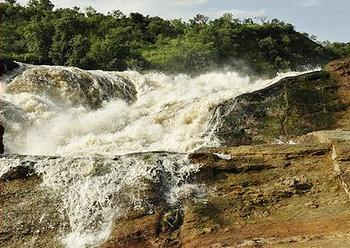
NEW YORK, New York, November 5, 2014 (ENS) – The Wildlife Conservation Society, which manages New York City’s zoos and aquarium plus 200 million acres of protected lands around the world, today sounded the alarm that the world’s protected areas are not fully protecting the imperiled animals and plants within their borders due to lack of funding and political commitment.
In a new study, “The performance and potential of protected areas,” published today in the journal “Nature,” experts from the Wildlife Conservation Society, the University of Queensland, and the IUCN World Commission on Protected Areas warn that governments in both developing and developed countries are backtracking on their commitments through funding cuts and changes in policy.

A recent global analysis has documented 543 instances where protected areas had their status downgraded or removed altogether. For example:
* – Recent cuts to the Parks Canada budget have reduced conservation spending by 15 percent.
* – In Uganda, active oil exploration and development is occurring inside many protected areas, including Murchison Falls National Park.
* – In Indonesia, in 2010, mining permits were issued inside 481,000 hectares of protected areas.
* – In the Virgin Komi Forests in Russia, significant boundary changes have been made to reserves such as the Yugyd Va National Park to allow mining.
* – The Arabian Oryx Sanctuary in Oman was removed from the World Heritage List after the government reduced the size of the reserve by 90 percent to allow for oil and gas extraction.
The paper, “The performance and potential of protected areas,” comes ahead of the IUCN World Parks Congress 2014 – a once-in-a-decade global forum on protected areas at the week-long event opening November 12 in Sydney, Australia.
“The growth of the modern global protected area movement over the last 100 years is arguably the greatest conservation achievement,” says Julia Marton-Lefèvre, IUCN Director General. “It is also increasingly important for livelihoods and global security.”
“The key now is for countries to recognize the return on investment that protected areas offer and realize that those places are fundamental to the future of life on Earth,” she said. “This is exactly what we hope to achieve at the upcoming IUCN World Parks Congress.”
According to the authors, allocating US$45 to $76 billion to protected areas annually – just 2.5 percent of the global annual military expenditure – could help adequately manage those areas, ensuring their potential contribution to the well-being of the planet is fully met.
Many threatened species, such as the Asian elephant, the tiger, and all rhinoceros species, as well as numerous plants, reptiles and amphibians, survive due to protected areas.
Well-managed marine protected areas contain more than five times the total large fish biomass and 14 times the shark biomass compared with fished areas, the authors point out.
“Protected areas offer us solutions to some of today’s most pressing challenges” says Dr. James Watson of the Wildlife Conservation Society and The University of Queensland and lead author of the study. “But by continuing with ‘business as usual’, we are setting them up for failure.”
“A step-change in the way we value, fund, govern and manage those areas is neither impossible nor unrealistic and would only represent a fraction of what the world spends annually on defense,” he said.
Protected areas cover around 15 percent of land and three percent of oceans. Experts warn, however, that despite the increase in their coverage over the past century, this is still short of the global 2020 targets to protect at least 17 percent of land and 10 percent of oceans.
Many ecosystems remain poorly conserved because protected areas do not always encompass the most important areas for biodiversity.
In addition, the vast majority of existing protected areas that are well placed do not have sufficient resources to be effective, with some studies finding as few as one quarter of them are being effectively managed.
Growing threats from climate change and the escalating poaching crisis place additional pressures on protected areas globally, the authors warn.
“Some of the most iconic protected areas, such as Ecuador’s Galapagos National Park, are undergoing significant degradation, partly due to an inability to manage them effectively,” says Professor Marc Hockings of The University of Queensland,co-author of the study and member of the IUCN WCPA.
“But governments cannot be solely responsible for ensuring that protected areas fulfill their potential,” he said. “We need to find new, innovative ways to fund and manage them, actively involving government, business and community groups.”
© 2014, Environment News Service. All rights reserved. Content may be quoted only with proper attribution and a direct link to the original article. Full reproduction is prohibited.
